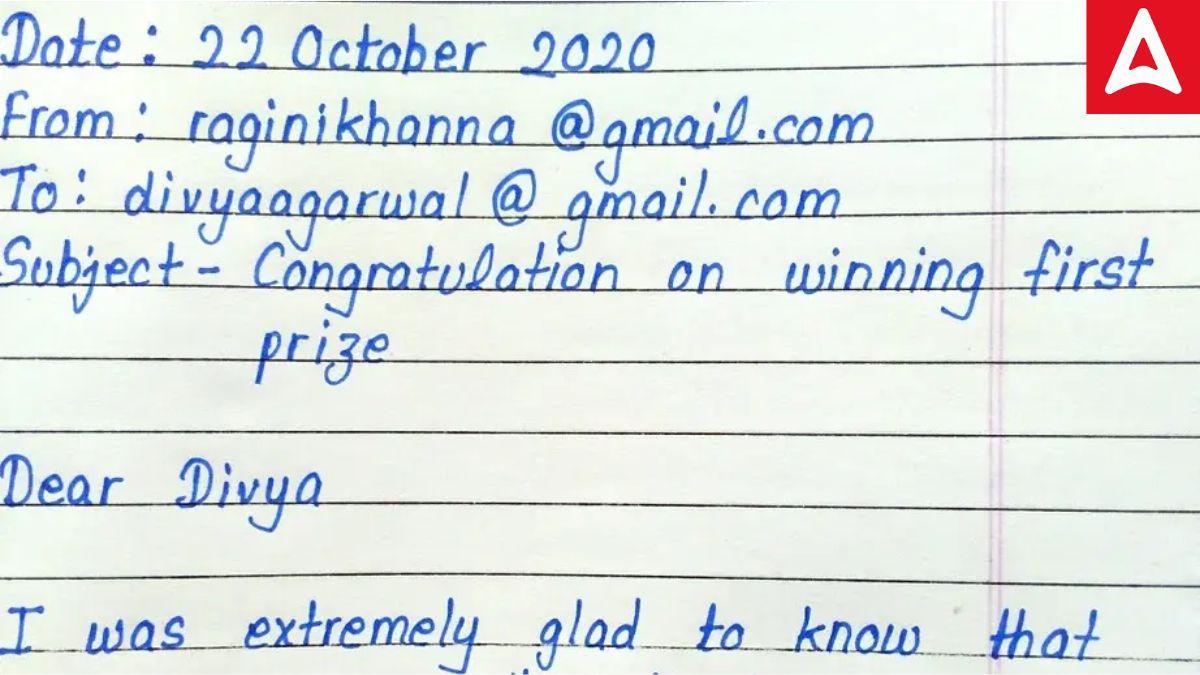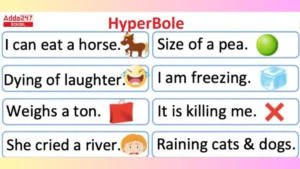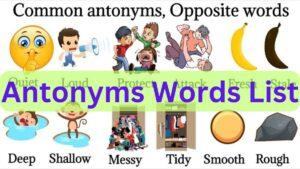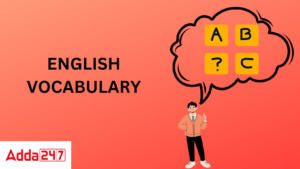Table of Contents
The process of creating and sending electronic messages is known as email writing. It is a widely used mode of communication in the workplace, as well as in personal and academic settings. It is critical to be clear, succinct, and polite while composing emails. In addition, you should utilize good grammar and spelling.
Start with a powerful subject line, personalize your greeting, establish the aim of your email early on, keep your email brief and to the point, use active voice and clear language, and close with a call to action to send great emails. You can compose excellent emails that will help you communicate effectively with others if you follow these recommendations.
Email Writing Class 10
Email writing is a technique of sending, receiving, and producing information over the Internet through an electronic communication system. Email means Electronic Mail, emails are widely used to communicate for official purposes. It is the most popular mode of communication since it is less expensive and it takes less time.
Email Format Class 10
Email writing format can be used as a formal, semi-formal, and informal way of writing. Getting a response to emails is not always necessary, the writer must write an effective mail. For example, if you are sending your resume via email to a recruiter and your email is not effective and as per the required, there are fewer chances you will get a response from the recruiter.
In this article, we have discussed the methods to write an effective email. We have given the email writing format, the writer can follow the format to write an appealing email. Bookmark this page to get related posts.
Standard Email Writing Format
The standard email writing format you can follow is given below:
1. Subject Line: Make it clear and concise. The subject line should give the recipient an idea of what the email is about. Avoid using all caps or overly promotional language.
2. Salutation: Use a formal greeting unless you have a well-established informal relationship with the recipient. Some common options are:
- “Dear [Recipient’s Name],”
- “Hello [Recipient’s Name],”
- “Hi [Recipient’s Name],”
3. Introduction: Begin with a brief introduction to remind the recipient of your relationship or to establish context. Mention any previous correspondence or mutual connections if relevant.
4. Body of the Email: This is where you provide the main content of your message. Divide it into paragraphs for better readability. Keep your language clear, concise, and focused on the main purpose of the email. Use bullet points or numbered lists for presenting information in a structured manner.
5. Closing: Choose a closing that matches the tone of your email and your relationship with the recipient. Some common options are:
- “Sincerely,”
- “Best regards,”
- “Kind regards,”
- “Yours truly,”
6. Your Name: After the closing, leave a few lines of space for your typed signature, and then type your full name.
7. Contact Information: Include your contact information below your name. This could include your phone number, job title, company name, and any relevant social media handles.
8. Attachments: If you’re attaching any files, mention them in the email and ensure they are appropriately named and easy to access.
9. Signature: If you’re using an email signature, it should contain your name, job title, company, and any other relevant information.
10. Additional Recipients: If you’re copying or forwarding the email to others, use the “CC” (carbon copy) or “BCC” (blind carbon copy) fields to include them.
Email Writing Tips
When you write an email, there are a few things you should keep in mind. Like informal and formal letters, email can be casual or professional. The format of the email varies depending on the type of email you’re composing. Check out the tips to write an effective email listed below:
- While writing the email, you must not make any grammatical and spelling mistakes. The email with grammatical mistakes made a bad impression on the recipient.
- Avoid using out-of-date letter-writing formats and stay up to date with the latest email writing format. Rather than using the traditional styles of writing paper letters, make all of your text left-aligned. Email is an electronic mail in which you don’t need to mention the date.
- While writing an email you must check the mail id of the receiver, otherwise, your mail can be bounced or will be received by the wrong person.
- Formal complaints should be well-written, but not at the expense of professionalism. While you are writing your criticisms, make sure your email doesn’t come off as hostile or unprofessional. It is vital to express the situations or occurrences that are causing offence as precisely and concisely as possible.
- The second most crucial aspect to consider while writing an email is the subject line. The subject line is the first thing a receiver will see. You must write a simple and up to the mark subject line, your subject line decides whether the recipient want to open your email or not. You must give an ample amount of time while writing a subject line.
- Write Salutation or Greeting in such a way that it is acceptable for the recipient.
- The body of the email is as important as the subject of the email. Be specific about what you want the receiver to know. Make sure you have written out all you want to convey to the receiver through your email. Avoid using overused language or repeating words to make your email look attractive. Font style and size should be uniform. Do a last spelling/grammar check.
- Sign off your email on a pleasant note and preview the email before sending it. To get a response from the receiver the closing should be genuine.
Email Writing Topics
Some email writing topics for various situations has been shared herein:
- Professional Communication:
- Job Application
- Cover Letter
- Networking Introduction
- Follow-Up after an Interview
- Resignation Letter
- Thank You for a Recommendation
- Business Correspondence:
- Client Introduction
- Proposal Submission
- Contract Negotiation
- Project Update
- Invoice and Payment Reminder
- Request for Testimonials
- Academic and Educational:
- Email to a Professor (Inquiry, Assignment Submission, etc.)
- Research Collaboration Proposal
- Application for Scholarships or Grants
- Invitations to Academic Events
- Recommendation Requests
- Personal Communication:
- Catching Up with a Friend
- Planning a Social Event or Gathering
- Sending Invitations (Parties, Weddings, etc.)
- Sharing Personal News or Achievements
- Expressing Condolences or Sympathy
- Customer Service:
- Product Inquiry
- Complaint or Issue Resolution
- Requesting Refunds or Exchanges
- Feedback on a Service Experience
- Providing Suggestions for Improvement
- Networking:
- Connecting with Professionals in Your Field
- Reaching Out to Industry Influencers
- Following Up After a Networking Event
- Requesting an Informational Interview
- Marketing and Promotion:
- Launching a New Product or Service
- Promotional Offers and Discounts
- Newsletter Updates
- Announcement of Events or Webinars
- Sharing Blog Posts or Content
- Collaboration and Partnerships:
- Proposing a Joint Venture
- Collaboration Inquiry with Other Businesses
- Influencer Partnership Proposals
- Cross-Promotion Requests
- Volunteer and Community Involvement:
- Organizing Volunteer Activities
- Seeking Donations or Sponsorships
- Inviting Participation in Community Events
- Thanking Volunteers and Supporters
- Health and Wellness:
- Scheduling Appointments with Doctors or Therapists
- Follow-Up on Medical Test Results
- Sharing Health Tips or Resources
Remember, when writing emails, it’s important to be clear, concise, and considerate of the recipient’s time and needs. Always tailor the content to the specific situation and maintain a professional tone when appropriate.
Some More Email Writing Topics
- Your friend wants to visit Uttarakhand. Write an e-mail giving your knowledge about Uttarakhand.
- Write an email to a Taj hotel manager to make a reservation.
- Write an e-mail to the Team Leader intimating about your absence sign as Ramesh.
- Congratulate your younger sister by email as he has won the first prize in an inter-school debate.
- As a President of Gokuldham Residents Club, write an email to the member inviting them to participate in the cleanliness drive to be launched at the central park and surrounding on Sunday at 9:00 am. Send the email to multiple recipients.
100 Topics for Email Writing
The list of 100 email writing topics across various categories is listed below:
Professional
- Request for a meeting
- Job application follow-up
- Project update
- Feedback request
- Proposal submission
- Introduction of a new team member
- Thank you for your support
- Reminder about an upcoming deadline
- Status update on a project
- Request for information
Networking
- Connecting on LinkedIn
- Requesting an informational interview
- Following up after a networking event
- Thank you for your mentorship
- Sharing an article of interest
- Inviting someone to a conference
- Request for a recommendation
- Seeking advice on career development
- Collaboration proposal
- Reconnecting with an old colleague
Customer Service
- Acknowledgment of a complaint
- Response to customer feedback
- Thank you for your purchase
- Update on a service issue
- Promotion of new products
- Invitation to participate in a survey
- Reminder about an upcoming service appointment
- Response to a request for a refund
- Apology for a delay
- Providing a solution to a problem
Marketing
- New product launch announcement
- Exclusive offer for subscribers
- Newsletter update
- Invitation to a webinar
- Special event invitation
- Customer loyalty program introduction
- Sharing success stories/testimonials
- Tips and tricks related to the product
- Seasonal promotion announcement
- Reminder of an expiring offer
Personal
- Birthday wishes
- Invitation to a gathering
- Sharing personal news (e.g., graduation, new job)
- Thank you note for a gift
- Catching up with a friend
- Sharing travel experiences
- Requesting support during a tough time
- Offering help to someone in need
- Planning a group trip
- Sharing a favorite book or movie recommendation
Education
- Request for a letter of recommendation
- Inquiry about course availability
- Thank you to a professor
- Discussion about a research project
- Reminder about an upcoming exam
- Sharing resources for studying
- Request for clarification on a topic
- Invitation to a student organization meeting
- Feedback on an assignment
- Seeking advice for career opportunities
Community and Social
- Invitation to a community event
- Volunteer opportunity announcement
- Thank you to volunteers
- Sharing updates from a local organization
- Discussion about community issues
- Invitation to participate in a fundraising event
- Request for donations or support
- Announcement of a community project
- Encouraging participation in local elections
- Sharing community success stories
Miscellaneous
- Survey invitation for feedback
- Reminder for a subscription renewal
- Announcement of a policy change
- Sharing interesting news or articles
- Invitation to a book club
- Discussion about a hobby or interest
- Sending a holiday greeting
- Sharing recipes or cooking tips
- Requesting advice on home projects
- Reminder about a payment due date
Follow-ups
- Following up on an email sent earlier
- Checking in after a meeting
- Status check on a job application
- Reminder about a pending response
- Follow-up on a networking request
- Thanking someone for a referral
- Following up after an event
- Request for a response to a proposal
- Checking in with a colleague
- Following up on a customer inquiry
Updates
- Sharing a personal milestone
- Announcing a change in business hours
- Update on personal projects
- News about a family member
- Sharing updates about a hobby
- Announcing a relocation
- Sharing goals for the future
- Providing updates on team projects
- Announcing changes in leadership
- Sharing plans for the upcoming year
Email Writing Examples For Students of Class 10 & 12
Here we have some examples of Email Writing for Class 10 and 12 Students.
Email Writing Format for Introducing a New Employee
To: Recipient’s mail id
Subject: Meet the New Business Development Executive.
Dear Team,
I am delighted to introduce you to (Name), who will begin working as Business Development Executive from today onwards. He will be dealing with the clients and he will make sure that we are getting the best deals.
Welcome him(Name) to our company and congratulate him(Name) on his new role!
Best regards,
Your name
Designation
Email to School Authorities Class 10 Technical Fest
Write a letter to inform your classmates regarding the technical festival in the college.
To: (email id of recipient)
Cc:
Bcc:
Subject: Technical Festival.
Hello Everyone!
I am pleased to inform you that, we have organized technical fest in our college and you all are inviting to take part in technical fest on 3rd March at 10:00 in the auditorium on a college campus.
For further details, feel free to contact either me or volunteers.
Thanks,
(Your name)
Class representative
E-mail Writing Format for Resignation
To: (Mail id of the recipient)
Cc:
Bcc:
Subject: Resignation Letter
Dear Sir,
I’m sending you this email to let you know that I’m quitting the company. According to business policy, I must provide a month’s notice before leaving. I’m hoping you’ll be able to find a suitable candidate for this position within this time frame.
I am grateful for the chances you have provided for me to grow. Best wishes for the future for you and the organisation.
Please let me know what to expect in terms of my final work schedule and employee benefits. It would be an honour to assist with the foregoing.
Waiting for your response.
Thanks and Regards
(Your name)
(Designation name)
Contact details
Email Lekhan Class 10 in Hindi
एक नए कर्मचारी को पेश करने के लिए ईमेल लेखन प्रारूप
To: प्राप्तकर्ता की मेल आईडी
विषय: नए व्यवसाय विकास कार्यकारी से मिलें।
प्रिय टीम,
मुझे आपको (नाम) से मिलवाते हुए खुशी हो रही है, जो आज से व्यवसाय विकास कार्यकारी के रूप में काम करना शुरू कर देंगे। वह ग्राहकों के साथ व्यवहार करेगा और वह यह सुनिश्चित करेगा कि हमें सबसे अच्छे सौदे मिल रहे हैं।
हमारी कंपनी में उनका (नाम) स्वागत है और उनकी (नाम) को उनकी नई भूमिका के लिए बधाई!
साभार,
तुम्हारा नाम
पद
ऑनलाइन NEET 2022 रिवीजन कोर्स खरीदें
छात्रों के लिए ईमेल लेखन प्रारूप
अपने सहपाठियों को महाविद्यालय में आयोजित तकनीकी उत्सव की सूचना देते हुए पत्र लिखिए।
To: (प्राप्तकर्ता की ईमेल आईडी)
सीसी:
बीसीसी:
विषय: तकनीकी महोत्सव।
सभी को नमस्कार!
मुझे आपको यह बताते हुए खुशी हो रही है कि, हमने अपने कॉलेज में टेक्निकल फेस्ट का आयोजन किया है और आप सभी को 3 मार्च को सुबह 10:00 बजे कॉलेज कैंपस के सभागार में टेक्निकल फेस्ट में भाग लेने के लिए आमंत्रित किया जाता है।
अधिक जानकारी के लिए, मुझसे या स्वयंसेवकों से बेझिझक संपर्क करें।
धन्यवाद,
(तुम्हारा नाम)
कक्षा प्रतिनिधि
इस्तीफे के लिए ईमेल लेखन प्रारूप
To: (प्राप्तकर्ता की मेल आईडी)
सीसी:
बीसीसी:
विषय: इस्तीफा पत्र
श्रीमान,
मैं आपको यह ईमेल यह बताने के लिए भेज रहा हूं कि मैं कंपनी छोड़ रहा हूं। व्यापार नीति के अनुसार, मुझे जाने से पहले एक महीने का नोटिस अवश्य देना चाहिए। मुझे उम्मीद है कि आप इस समय सीमा के भीतर इस पद के लिए उपयुक्त उम्मीदवार ढूंढ पाएंगे।
आपने मुझे बढ़ने के लिए जो अवसर प्रदान किए हैं, उसके लिए मैं आभारी हूं। आपके और संगठन के उज्जवल भविष्य की कामना करता हूँ।
कृपया मुझे बताएं कि मेरे अंतिम कार्य शेड्यूल और कर्मचारी लाभों के संदर्भ में क्या अपेक्षा की जाए। पूर्वगामी के साथ सहायता करना एक सम्मान की बात होगी।
आपकी प्रतिक्रिया के लिए प्रतीक्षा कर रहा हुँ।
धन्यवाद और सादर
(तुम्हारा नाम)
(पद नाम)
संपर्क विवरण
| Related Posts | |
| Email Writing Format | Precis Writing: Format |
| Notice Writing Format | Report Writing- Format |
| Informal Letter Format, Samples | Formal Letter Format |





 Hyperbole- Explanation, Definition, Exam...
Hyperbole- Explanation, Definition, Exam...
 500+ Antonyms Words List for Kids, Downl...
500+ Antonyms Words List for Kids, Downl...
 Vocabulary Words with Meaning and Senten...
Vocabulary Words with Meaning and Senten...










